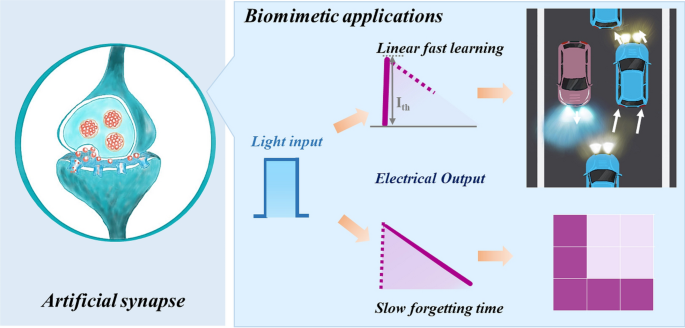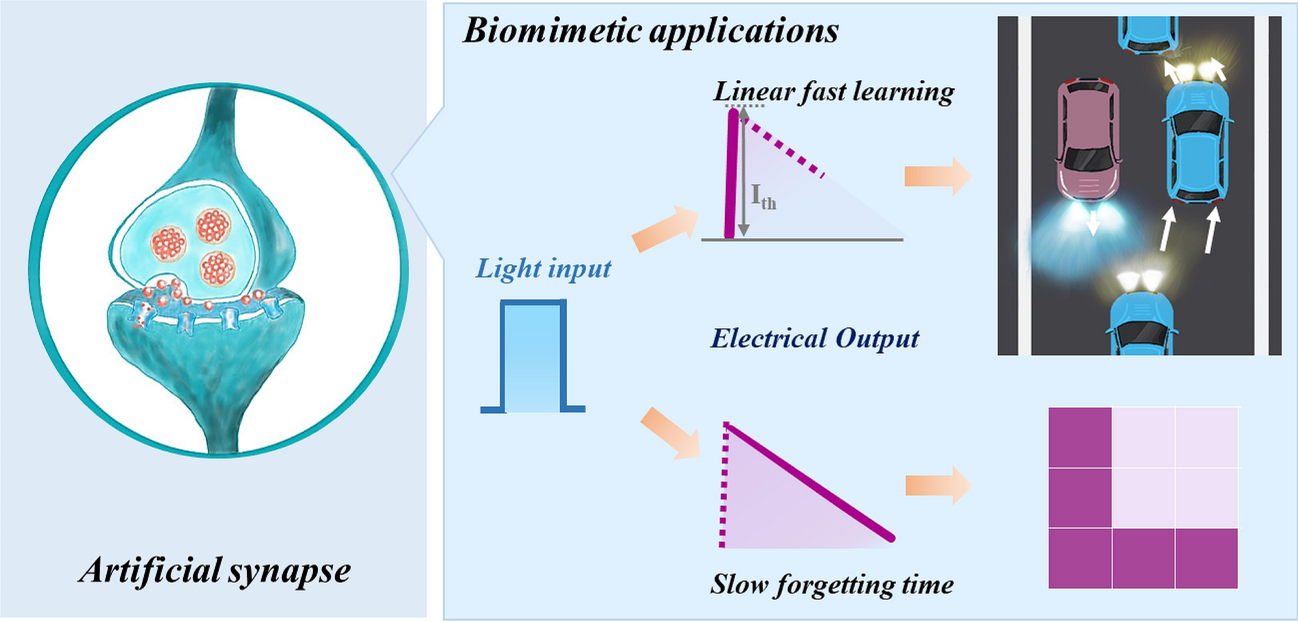Low Energy Consumption Photoelectric Memristors with Multi‑Level Linear Conductance Modulation in Artificial Visual Systems Application

As artificial intelligence races toward real-time, on-sensor vision, conventional CMOS cameras face a "power wall" and a "memory wall." Now, researchers from Hebei University, led by Professor Xiaobing Yan, have unveiled a low-energy photoelectric memristor that acts like an optical synapse, offering a one-chip solution to sense, store and process visual information the way our retina does.
Why Low-Energy Photo-Memristors Matter
- Ultra-low energy: a single 0.5 V, 5 ms optical pulse consumes only 187 pJ—far below the ~900 pJ of a CMOS spike.
- Linear learning: conductance updates show 99.6 % linearity, eliminating redundant weight tuning and cutting system power.
- Retina-like functions: paired-pulse facilitation, long-term plasticity and "learning-experiencing" behaviors are reproduced under visible light.
Innovative Design & Features
- TiN/CeO2/ZnO/ITO/Mica stack: the CeO2/ZnO interface traps photo-carriers, dynamically lowering the barrier and enabling multi-level, linear conductance modulation.
- Two-terminal cross-point structure: compatible with dense 64 × 64 arrays and simple 1T1R or 1S1R back-end-of-line integration.
- Wide-band response: defect-rich CeO2extends sensitivity from UV to visible, allowing outdoor and night-time operation without filters.
Applications & Future Outlook
- Image memory: a 3 × 3 array memorizes the letter "L" for >8,000 s after only 10 exposures—mimicking human long-term visual memory.
- Facial recognition: a 64 × 64 artificial retina achieves >92 % activation on female facial features and maintains high accuracy even under 20 % optical noise.
- Autonomous night driving: a hardware demo uses linear optical synaptic weights to trigger safe bidirectional vehicle rendezvous without external illumination.
This work charts a clear roadmap for integrating sense-memory-compute pixels into bionic eyes, smart cameras and neuromorphic edge devices. Expect slimmer, smarter visual systems as the team scales the arrays toward megapixel chips and explores new oxide stacks for even lower energy and higher speed.
Follow the Topic
-
Nano-Micro Letters

Nano-Micro Letters is a peer-reviewed, international, interdisciplinary and open-access journal that focus on science, experiments, engineering, technologies and applications of nano- or microscale structure and system in physics, chemistry, biology, material science, and pharmacy.
Your space to connect: The Polarised light Hub
A new Communities’ space to connect, collaborate, and explore research on Light-Matter Interaction, Optics and Photonics, Quantum Imaging and Sensing, Microscopy, and Spectroscopy!
Continue reading announcement





Please sign in or register for FREE
If you are a registered user on Research Communities by Springer Nature, please sign in